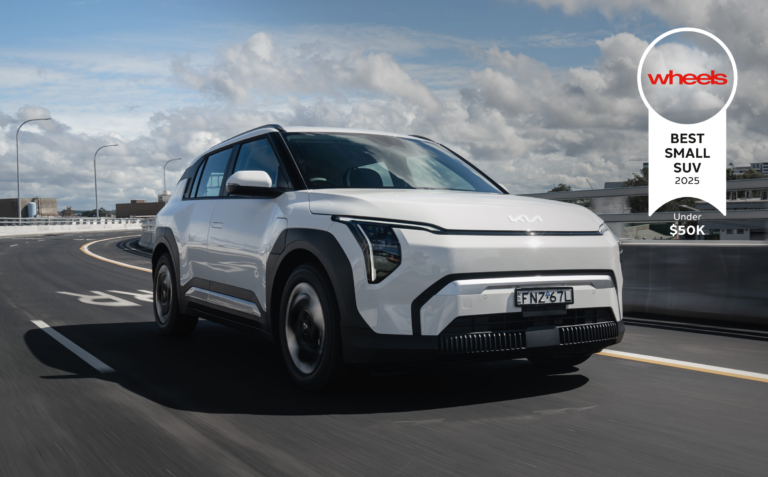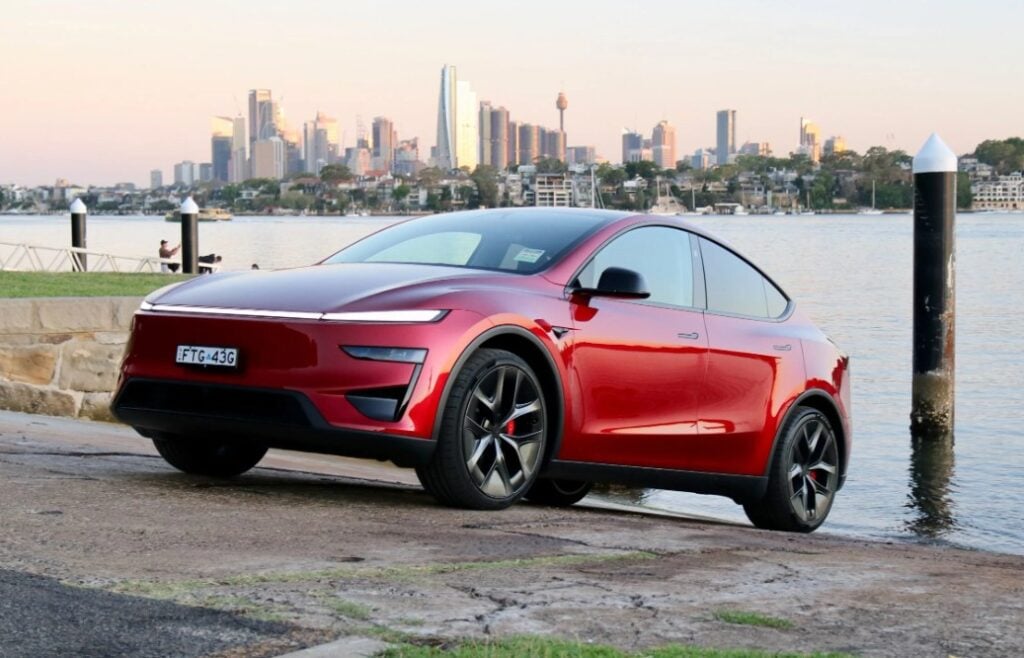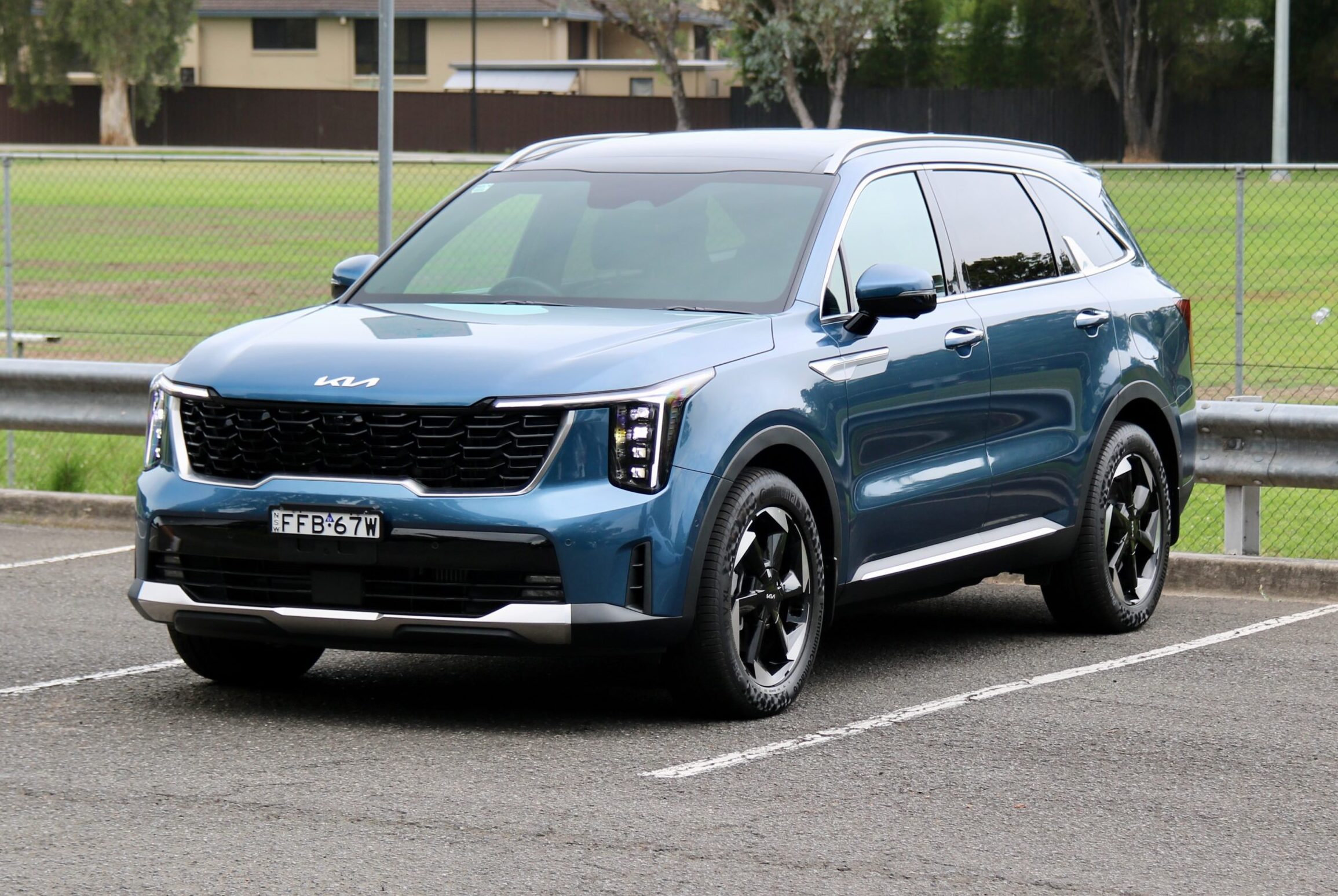
- Price: $73,330 plus on-road costs
- Engine: 1,598cc 4-cyl turbo DOHC petrol
- Electric motor: front permanent magnet synchronous
- Battery: 1.49kWh lithium-ion
- Combined outputs: 169kW/350Nm
- Transmission: six-speed automatic, all-wheel drive
- Fuel consumption (claimed/on test): 5.9L/100km / 6.9L/100km
- L/W/H/WB: 4,815/1,900/1,700/2815mm
- Weight: 1,972kg
- Boot: 179/608/1,996L
- 0-100km/h: 9.0 seconds
| Rating |
Things we like:
- Handsome styling inside and out
- Efficient hybrid drivetrain the one to choose
- Great locally-tuned ride and handling balance
Things we don’t like:
- Third row not huge
- Hybrid only available at the top of the range
- Short 10,000km service intervals

It’s no secret that vehicles comprising the seven-seat large SUV market are in high demand right now in Australia, with more options becoming available for a wide range of budgets.
At the cheaper end of the market are cars like the Chery Tiggo 8 Pro. Add considerable dollars to the equation gets you to the Mercedes-Benz GLS and BMW X7. In the middle are cars such as the Kia Sorento, which give buyers a wide range of models and powertrains to choose from. Is the Sorento, in top-spec GT-Line Hybrid form – one of the best seven-seat SUV options out there?
While the larger Telluride exists overseas, the Sorento is Kia’s flagship ICE SUV in Australia and has long been one its biggest sellers too. In its current fourth-generation form, the Sorento is available with petrol, diesel, hybrid and plug-in hybrid drivetrains to suit a wide range of buyers. Pricing starts at under $60,000 drive away, and hits over $90,000 for the plug-in hybrid.
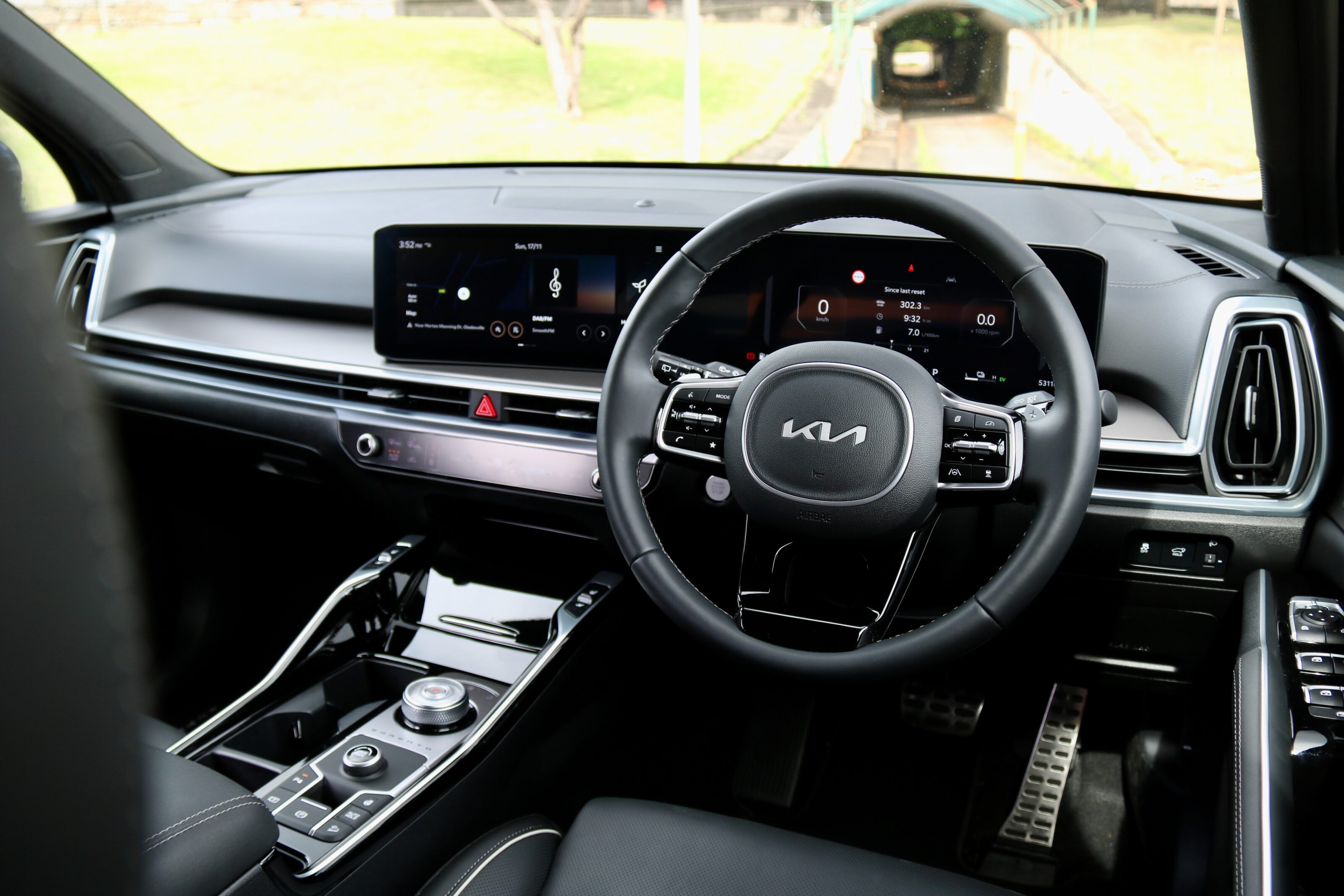
Pricing
While there are multiple Sorento grades that have petrol and diesel engines, the hybrid drivetrain is only available in top-spec GT-Line form for now:
| Sorento GT-Line Hybrid FWD | $70,330 |
| Sorento GT-Line Hybrid AWD | $73,330 |

Standard equipment
The Sorento GT-Line Hybrid is equipped with:
- 19-inch alloy wheels
- Dusk-sensing automatic LED exterior lighting
- Rain-sensing automatic wipers
- Keyless entry and start with remote start and remote parking
- Heated/auto-folding/auto-dipping mirrors
- Roof rails
- Panoramic sunroof
- Rear privacy glass
- Electric tailgate with easy open functionality
- Dual-zone climate control with rear fan speed control
- Heated leather steering wheel with paddle shifters
- Quilted Nappa leather upholstery
- Electric front seats with driver’s memory functionality
- Heated and ventilated front seats, heated outboard middle seats
- 12.3-inch digital driver’s display and 12.3-inch touchscreen
- Wireless and wired Apple CarPlay and Android Auto
- Satellite navigation
- AM/FM/DAB+ digital radio
- 12-speaker Bose sound system
- Wireless phone charger
- 6x USB-C ports
- Head-up display
- Ambient lighting
- Digital centre mirror
- Seven airbags
- Autonomous emergency braking (AEB) with pedestrian, cyclist and junction assistance
- Lane keeping assistance with adaptive lane guidance
- Adaptive cruise control with stop and go functionality
- Blind-spot monitoring with rear cross-traffic alert (with braking)
- Safe exit assist
- Driver attention monitoring
- Traffic sign recognition with speed limit assist
- Auto high beam
- 360-degree camera
- Front and rear parking sensors
- Tyre pressure monitoring
- Rear occupant alert
- Automatic rear braking
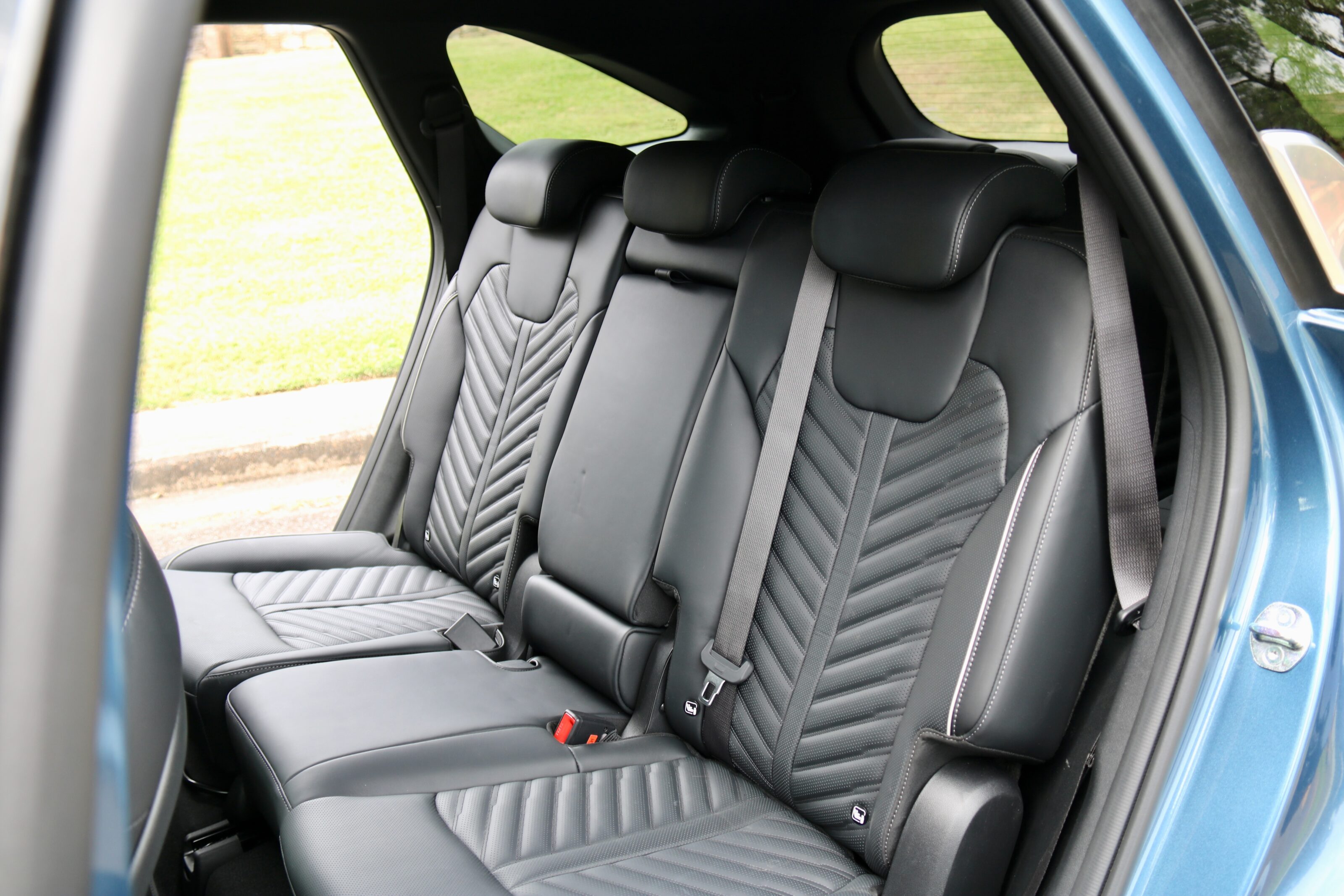
Performance and economy
Under the bonnet of the Kia Sorento Hybrid is a turbocharged 1.6-litre four-cylinder petrol engine that’s combined with an electric motor. Either just the front or, optionally, all four wheels are sent power through a six-speed automatic transmission. The 44kW electric motor draws power from a 1.49kWh lithium ion battery, and combined outputs are 169kW of power and 350Nm of torque.
Kia claims combined fuel consumption of 5.7L/100km with claimed combined CO2 emissions of 129g/km – we achieved 6.9L/100km in our week of testing. The Sorento Hybrid can run on 91RON regular unleaded fuel, and has a 67-litre fuel tank.
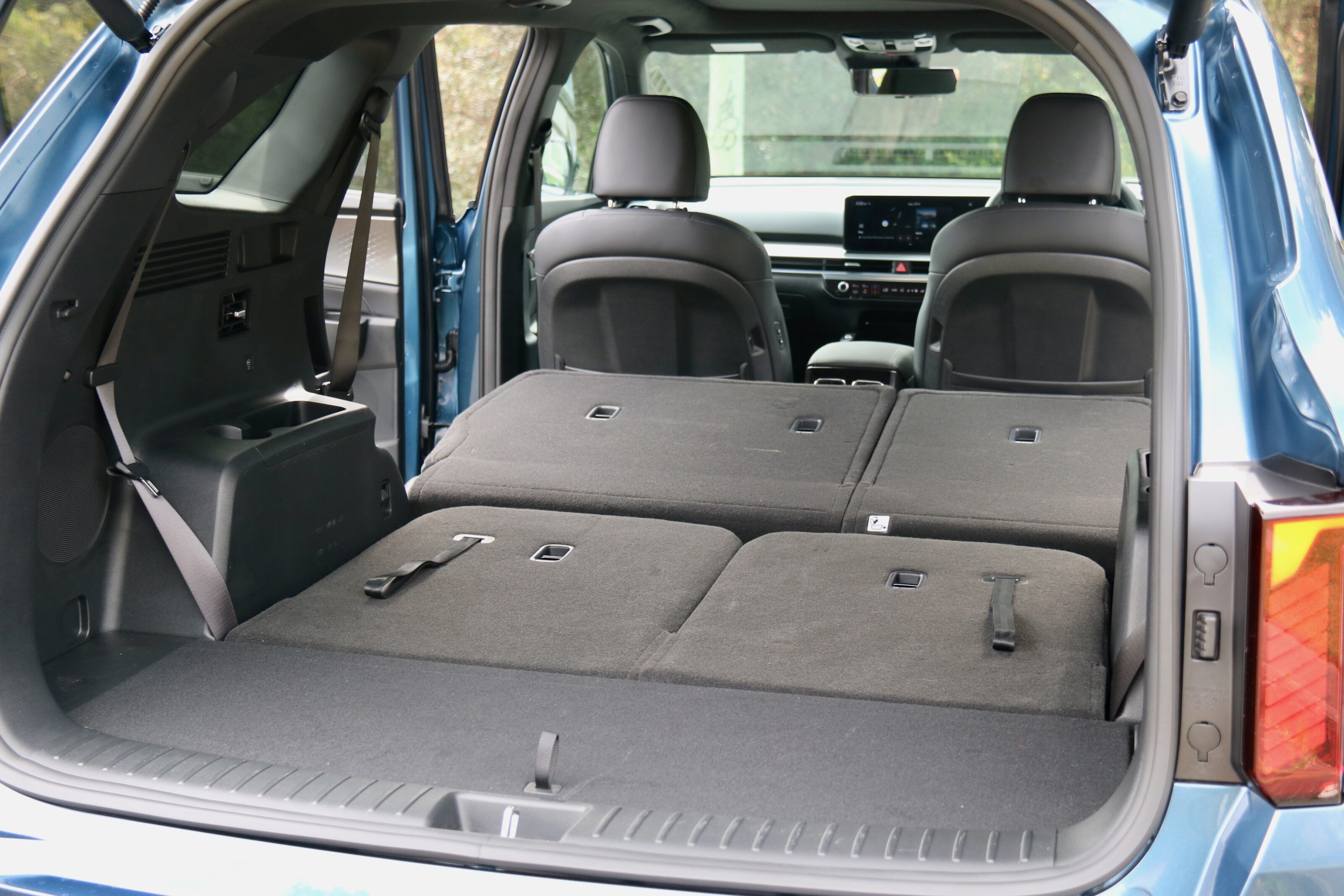
Interior comfort, practicality and boot space
Kia gave the Sorento’s cabin a comprehensive revamp at its mid-life update with a new dashboard layout that’s more modern and simpler to use. Quality is excellent with plenty of soft touch materials – especially the lovely quilted Nappa leather trim – though only black colouring is available, making the cabin a bit dark. That is until you open the huge panoramic sunroof, which floods the interior with light.
Part of the cabin revamp was the introduction of a huge single screen across the dashboard incorporating dual 12.3-inch screens: one for the driver and a touchscreen for controlling the infotainment system. The touchscreen uses the brand’s new ‘ccNc’ software and it’s a breeze to use, while also being well featured with wireless and wired smartphone mirroring, satellite navigation and digital radio. The screen is a bit dark, but the quality is excellent.
There are plenty of places to store items in the front seat, and seat comfort is excellent – especially in the driver’s seat with its seemingly endless electric adjustment. Move to the middle row and it’s also positive with plenty of space for two tall adults and features such as charging ports, bottle holders in the doors, door pockets, heated outboard seats and air vents.
The rear seat is definitely designed for children, but six-footers should be okay on a short trip. Rear seat amenities include charging ports, cup holders and a fan speed controller. The middle row of seats slides and reclines for extra comfort or space, though access to the third row could be easier like the Hyundai Santa Fe.
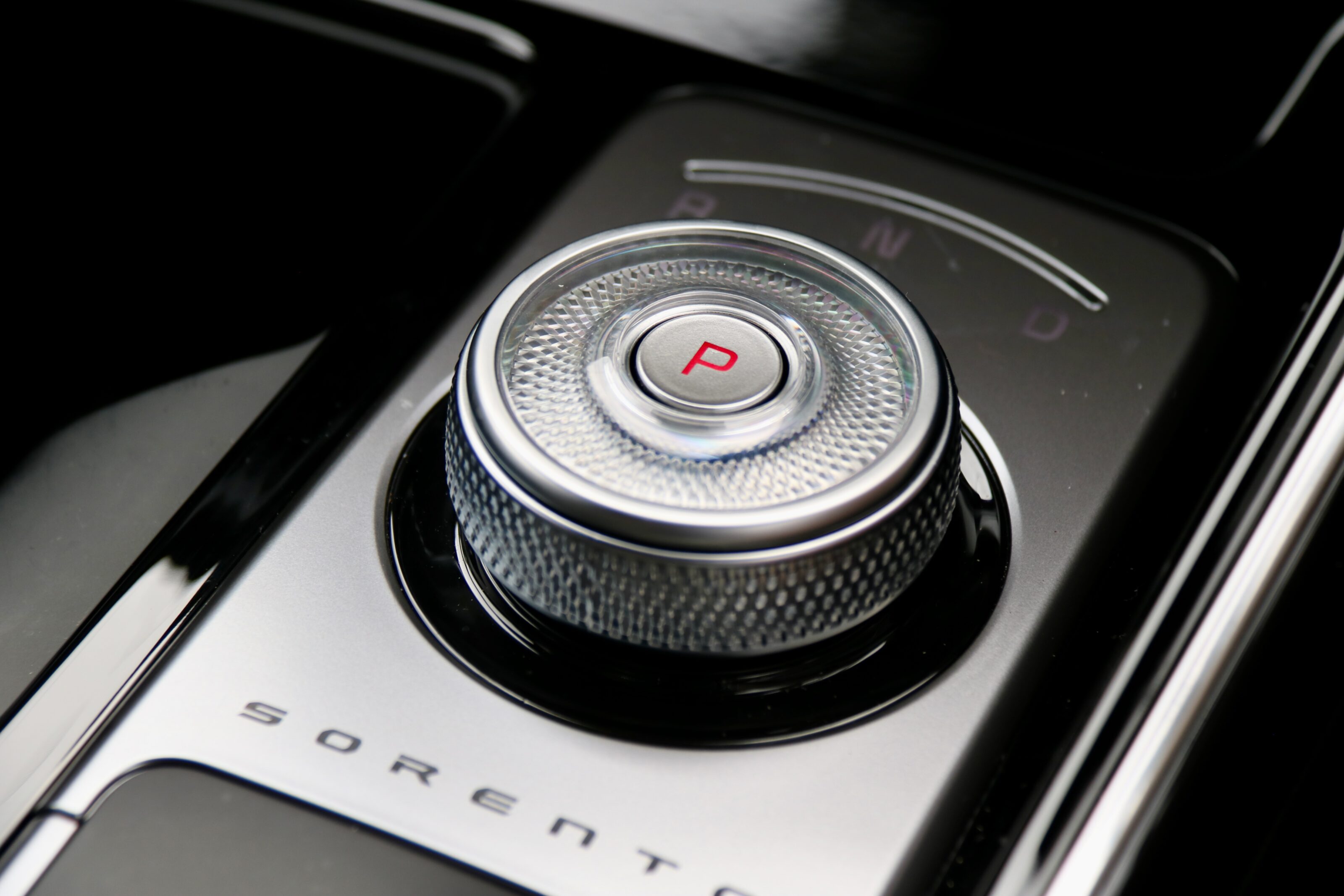
The boot of the Sorento measures 179 litres with the rear row up, 608L with the rear seats folded and 1996L with the second row folded as well. With the seats all folded, it’s a huge space and could easily take the worst an Ikea trip could throw at it. Impressively, the Sorento GT-Line Hybrid features a full-sized alloy spare wheel.
On the road
One of Kia’s biggest achievements for the Australian market has been its local tuning program, which ensures that every Kia model rides and handles well on our often rubbish roads and the Sorento is no different. Put simply, the Sorento is great to drive for such a large car: it can be a fun handler for such a large car, reasonably balanced in corners and the quick steering is satisfying to use.
The ride quality is excellent – it’s taut and body control is well controlled, and while it’s a bit firmer than its Santa Fe cousin, it is slightly more fun to drive. It’s definitely more comfortable than the too-firm Mazda CX-80. Road noise levels are well kept and the active safety features are well tuned, as you’d expect for a Kia product – though the annoying active speed limit warning must be turned off every time you drive the car.
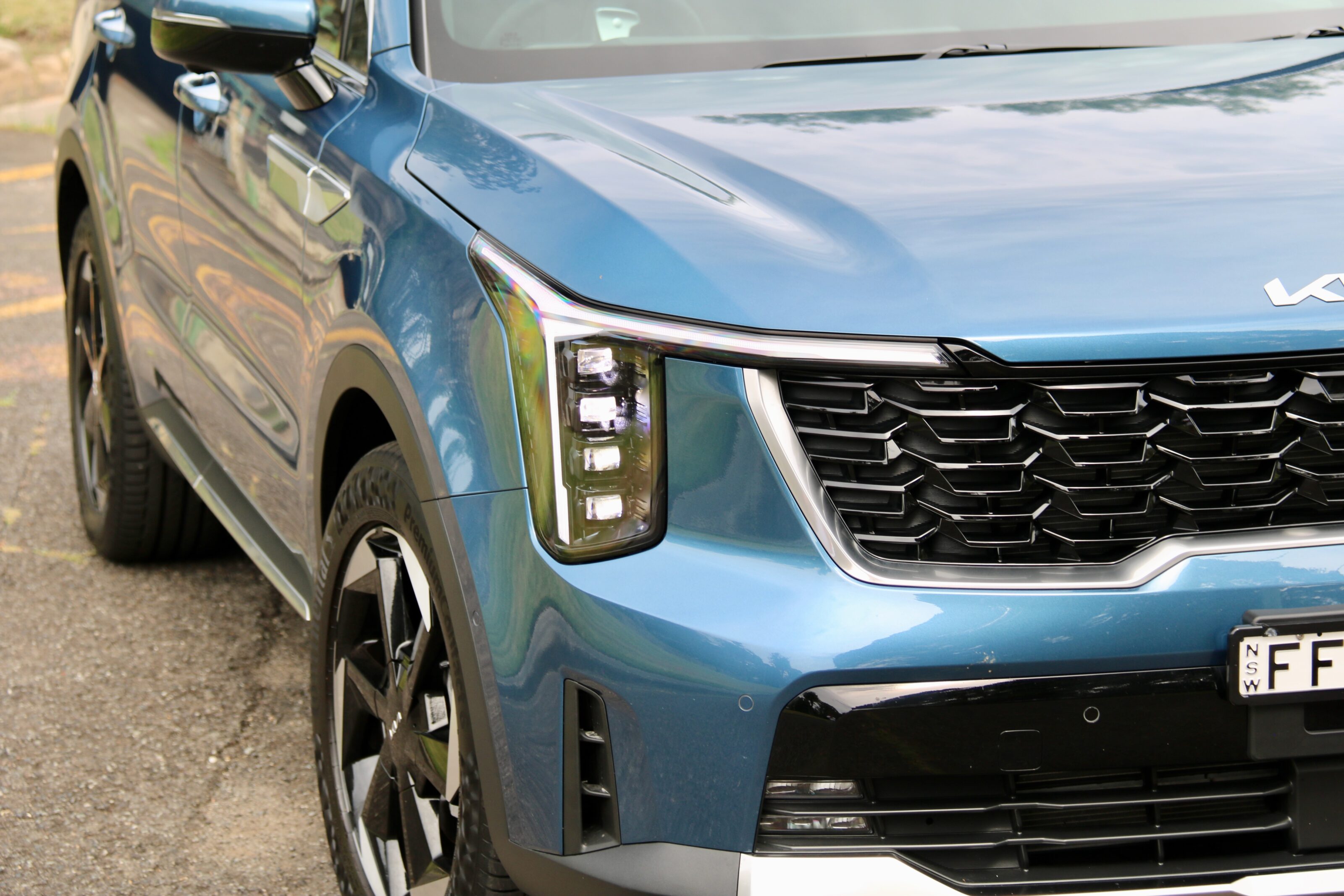
Service and warranty
The entire Kia range is backed by a seven-year/unlimited km warranty with up to eight years of roadside assistance if serviced through a Kia dealership. The hybrid battery is covered for seven years or 150,000km, whichever comes first.
The Sorento Hybrid has short 10,000km service intervals and its five-year/50,000km service price is $2,973 ($594 per service on average).
Verdict: Should I buy a 2025 Kia Sorento GT-Line Hybrid?
If you’re in the market for a seven-seat large hybrid SUV, there are now a surprising amount of contenders and we think that the Kia Sorento is one of the best. While it’s not the newest in the segment, Kia has kept it nicely updated with freshened exterior styling, a new dashboard and new features and because of that, it remains one of the best.
The hybrid drivetrain is efficient and performs well, while the driving experience is excellent thanks to Kia’s local tuning program. Its cabin is practical, comfortable and great quality, and the in-car tech is plentiful and easy to use. It could be cheaper, however, and we hope the brand adds cheaper hybrid models in the future. That aside, the Kia Sorento GT-Line Hybrid should definitely be on your shortlist in this segment.


